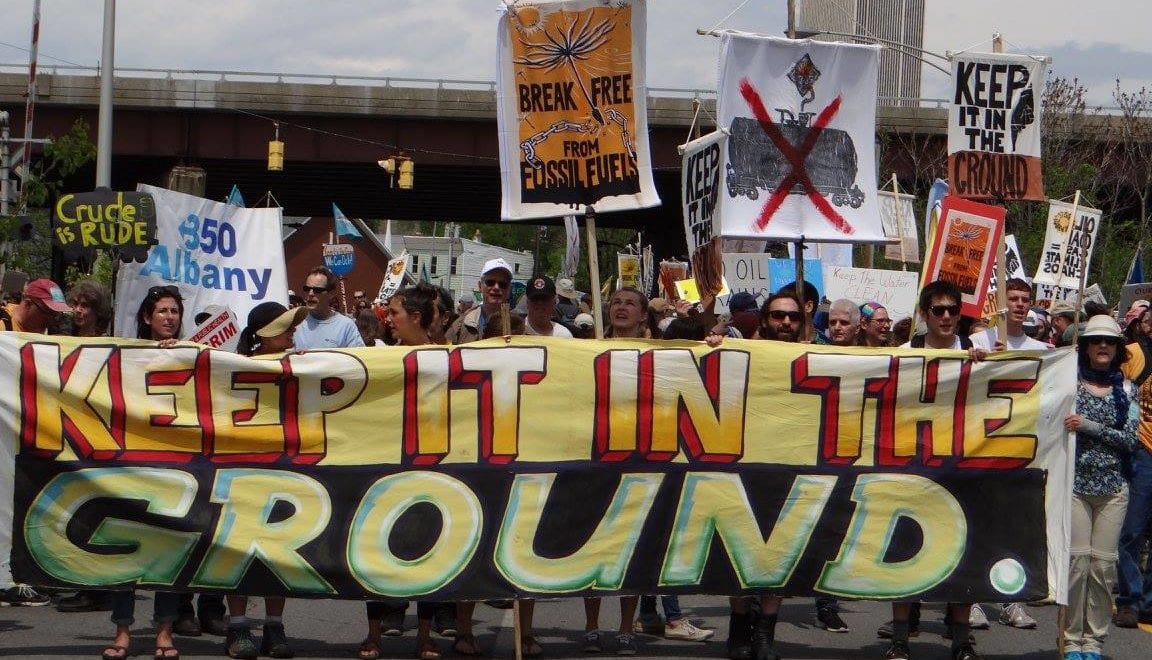Today, students and youth across the United States are walking out of their schools and marching for radical climate action. They are joining a growing global youth movement that’s taking direct action to demand that governments act on climate change. These strikes represent a needed level of urgency, and in our U.S. context, they build on the stunning progress made by the youth activists who helped launch the Green New Deal into the national conversation.
If these strikes seem like a radical step, good. That’s what they’re meant to be. In her now-viral speech to government leaders at Davos, Greta Thunberg, the sixteen-year-old Swedish student whose weekly protests sparked this movement, said: “I want you to panic. I want you to feel the fear I feel every day. I want you to act. I want you to act as you would in a crisis. I want you to act as if the house is on fire, because it is.”
For Greta and her fellow youth activists, the climate action decided on today will define the type of world they live in. They are demanding that governments not just act on climate change, but act immediately and radically to truly address the problem.
Climate change is a life-or-death crisis that no one gets to opt out of. It’s already here. It’s just that, for now, the crisis is easier to ignore in the U.S. than in other parts of the world where extreme climate conditions are wreaking havoc on communities and crops. But here and around the world, climate change is exacerbating forest fires, droughts, and floods. People in developing countries, particularly farmers, are feeling these impacts worse than ever, despite having done nothing to cause the problem.
The students striking today know that climate impacts in the US are going to get worse and they care about the outsize role our country played in creating this crisis. They may not be able to vote yet, but they will be living with the consequences of today’s climate policy for the rest of their lives.
And no, they can’t “leave this to the adults” who, frankly, have failed miserably thus far. Nor can they wait until they are adults themselves. Science is clear that we are running out of time. Without radical emission reductions, starting right now, the world won’t be able to limit global warming to 1.5°C. And the difference between limiting warming to 1.5°C versus 2°C is stark. In a 2-degree-warming world, more than twice as many people would be exposed to extreme heat, 10 million additional people would lose homes to rising sea levels, and millions more would face poverty and hunger due to reductions in agriculture production.
In addition to demanding urgency, students and youth are also demanding action at a radical scale – not insufficient half-measures that tinker around the edges of the status quo. Sometimes it has seemed like the bar for being a “climate champion” was simply acknowledging the crisis exists. For the youth activists in the school strikes, the Sunrise Movement, and other campaigns to fight climate change, that bar is not high enough – nor should it be.
Yes, climate deniers should be held accountable for willfully ignore the crisis, but acknowledging the problem is only the first step. Those who acknowledge the problem but then put forward proposals that don’t reflect where science and justice say we need to go, have rightly been labeled “climate delayers.” Particularly when these delayers are dismissive of those who are calling for truly transformative action, they are hardly any closer to coming to terms with the climate crisis than the deniers. When the house is on fire, pouring only enough water to put out a campfire is not going to cut it.
So, to all the school strikers: we’re with you. And we are committed to continue fighting for an urgent, radical global climate response that meets the People’s Demands for Climate Justice.



